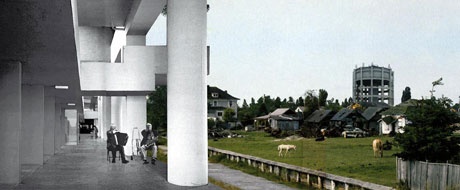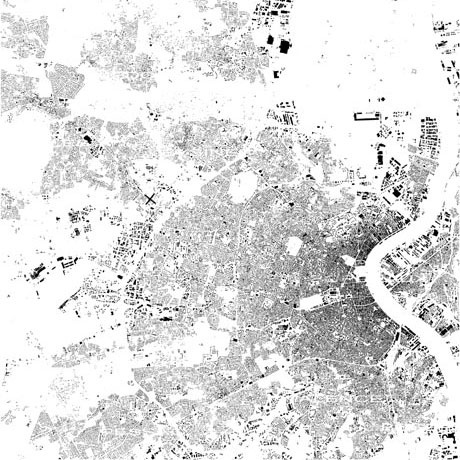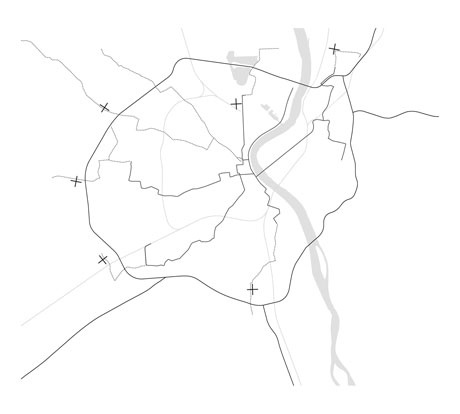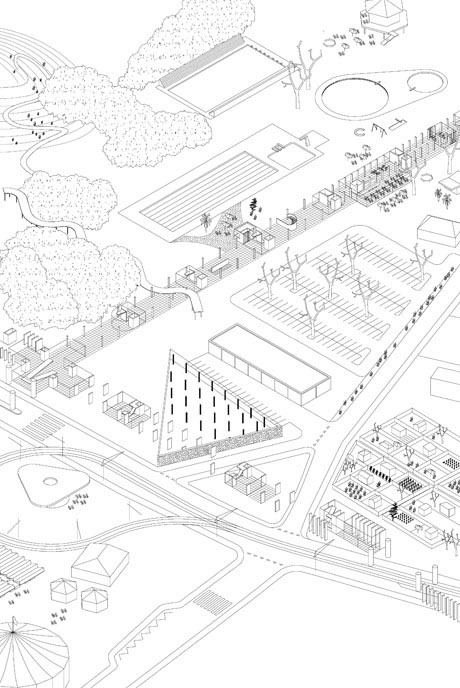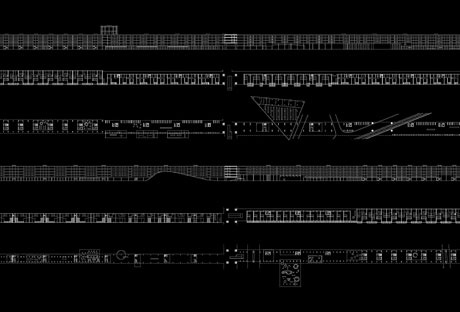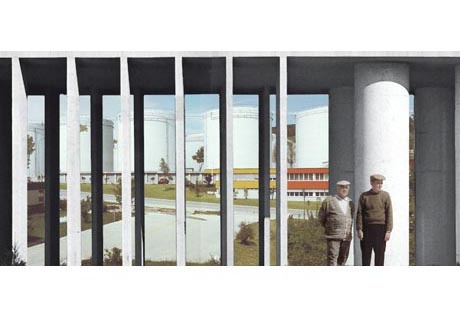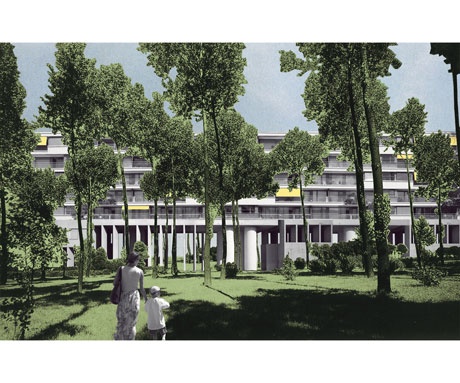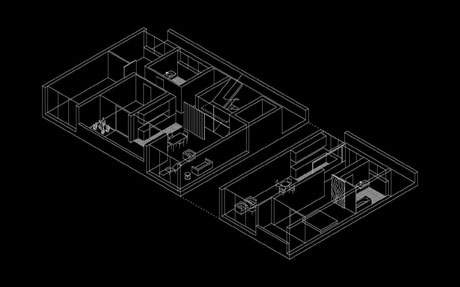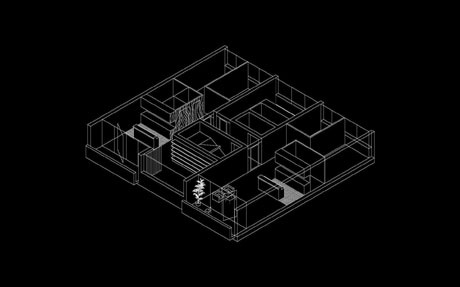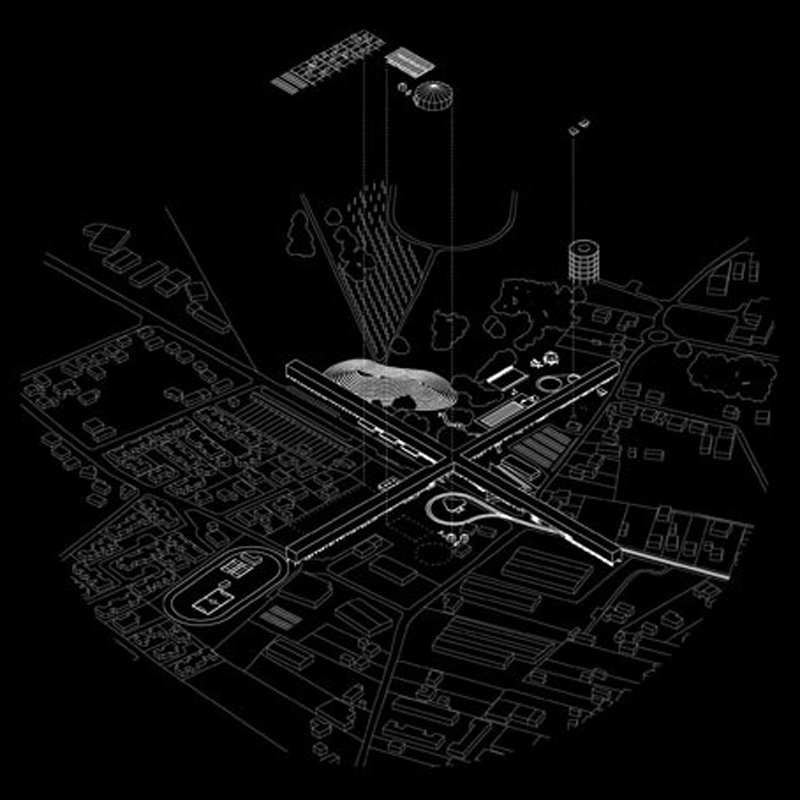“The Eysines Le Taillan Site, one of the test grounds, (and exemplary for the ‘Zwischenstadt-condition’ in Bordeaux – vastly embedded between the existing historic urban core and the countryside) is a peripheral residential area which has long since grown beyond the small village nucleus it once was. The dominant housing type is the detached or semi-detached house with its own plot, attesting the much-desired ideal of living in a freestanding villa. Here and there, the residential areas are interrupted by shopping centres, leisure facilities, forest, agricultural plots and solitary housing blocks: an apparently ideal suburban living environment. Naturally there is an ongoing global debate about the future of this suburban dream and about the ecological or economic consequences produced by such areas. Yet, without entering this general debate about the future of our cities, we assert that the contemporary middle-class lifestyle of these areas – detached or semi-detached houses with two cars in each household – is too costly for many and therefore excludes a growing part of our society. Hence the project and its programme will focus on affordable rental housing for the masses, on accessibility by public transport and on a high quality public space instead of the private fenced gardens of the villa-developments.
“El emplazamiento de Eysines Le Taillan es una zona residencial periférica que ha crecido ampliamente a partir del pequeño núcleo rural que un día fue. La tipología dominante es la vivienda unifamiliar aislada o pareada, conformando la muy anhelada aspiración de vivir en una villa. Por todas partes el tejido residencial se encuentra interrumpido por centros comerciales, equipamientos deportivos, explotaciones agrícolas, forestales y solitarios bloques de viviendas: aparentemente un entorno suburbano ideal. Evidentemente, existe un debate sobre el futuro de este ideal suburbano y las consecuencias económicas o ecológicas que este modelo puede implicar. Podemos afirmar que el estilo e vida de la clase media en estas áreas, viviendas unifamiliares con más de dos vehículos por familia, es demasiado costoso para muchos y por tanto excluye a una parte de la población cada vez mayor. Así el proyecto y su programa se focalizarán en conseguir viviendas de alquiler asequibles para las masas, accesibles por medio de transporte público y sobre espacios públicos de gran calidad, en contraposición con los espacios cerrados y privados de las villas.
The project will therefore not develop, as Sieverts calls it, an easily consumable image of another middle class development, but add basic amenities to form a new centrality in order to make the existing site inhabited by a diverse social mix. What does this new centrality look like? Despite the fact that historic architectural and spatial qualities are evident in the old city core of Bordeaux, yet it is clear that these qualities cannot be simply replicated and implemented in the peripheries, it is necessary to respond to the specific contemporary context of Eysines. Existing villas, solitary housing blocks, public gardens and leisure facilities stand next to shed-roofed industrial buildings: Which urban form would tolerate, accept and preserve the constituents of the Zwischenstadt or even offer the potential to strengthen the quality of its diversity? We believe that to deal with such conditions is one of the major tasks of European urbanism in the 21st century.”
El proyecto no desarrollará, por lo tanto, otra imagen fácilmente consumible de una intervención para la clase media, añadirá sin embargo pequeños servicios para generar una nueva centralidad con la intención de hacer que el lugar sea habitado por grupos sociales muy heterogéneos. ¿A qué se asemeja esta nueva centralidad? A pesar de el hecho de que las cualidades históricas, arquitectónicas o espaciales son más que evidentes en el centro histórico de Burdeos, es evidentes que estas cualidades no pueden ser simplemente replicadas e implementadas en la periferia. Es necesario responder al contexto específico e Eysines. Las villas existentes, los bloques de viviendas aislados, jardines y equipamientos de ocio conviven con edificios industriales. ¿Qué forma urbana toleraría, aceptaría y preservaría las características del Zwischenstadt o incluso ofrecería el potencial para potenciar la calidad de su diversidad? Creemos que tratar con estos aspectos es una de las principales tareas del urbanismo europeo del siglo XXI”
Extract from the competition report
Extracto de la memoria del concurso
